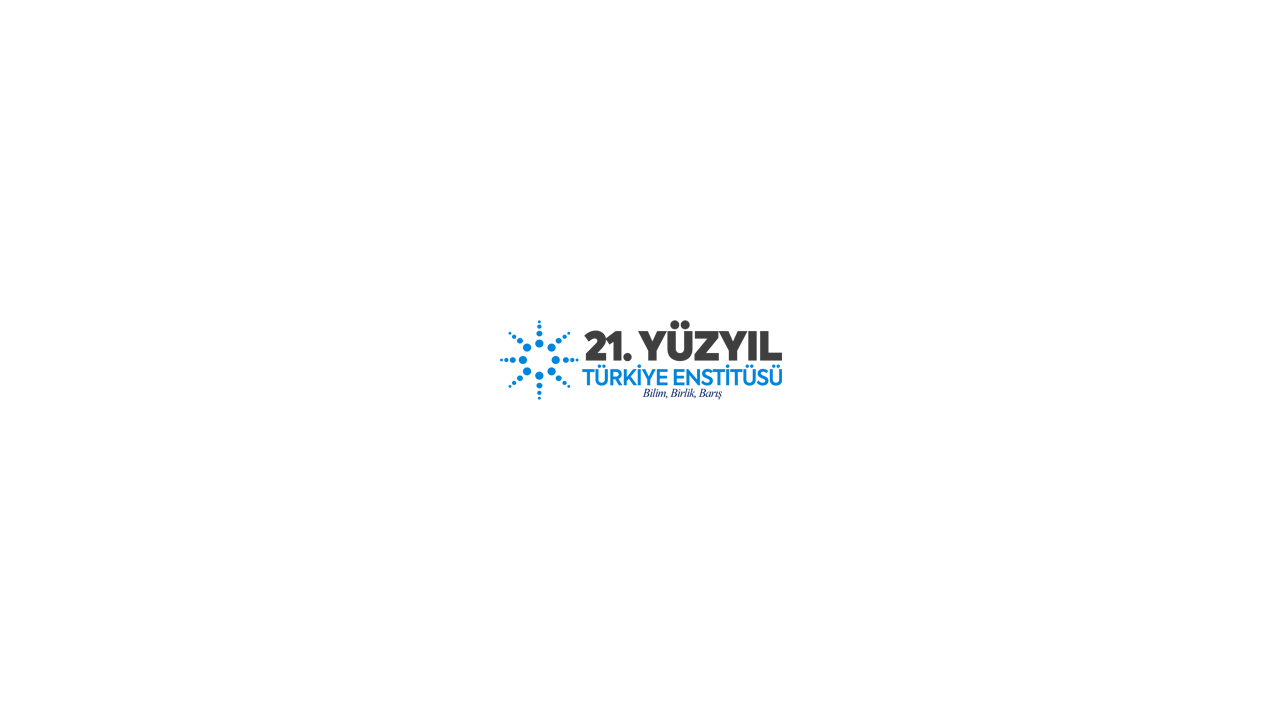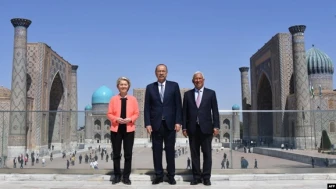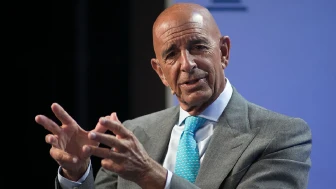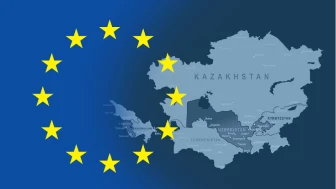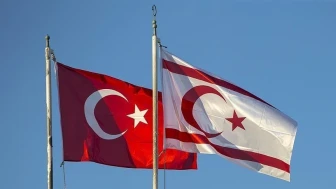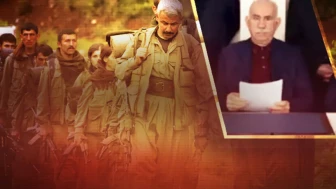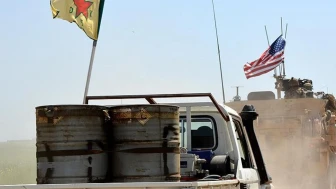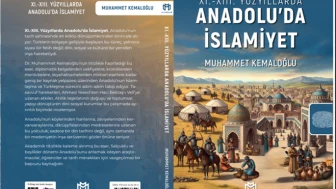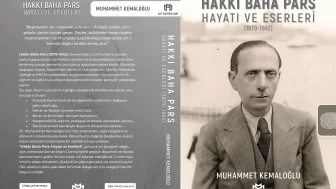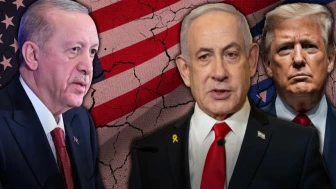Discontent grows in the Balkan geography. The regional tension includes EU member countries. In the middle Balkans which is always seen to be in risk of conflict, things appear calm despite the anger of the people. Big words and small scale conflicts have become a part of daily life. Instability, economic hardship, unemployment and poverty, political crises the discontent and desperation of people have come to define the everyday circumstances of the post-war period.
While there should have been more concern over the lack of hope felt by the people of the region, their distrust in politicians and the constant postponing of the better days to come, this was overlooked like many other things. Kosovo, Macedonia, Bosnia-Herzegovina, Serbian and Albania to some extent... Greece and Bulgaria have joined this group through strong protests. One should observe south-eastern Europe, that is the Balkans, carefully in 2014. Even stronger protests than have taken place so far were expected in Greece. While it is still possible, Greece’s term presidency of the EU seems to have calmed things down. The strongest protests yet have begun in Bosnia-Herzegovina. Should social unrest spread through the lines of tension crisscrossing the region, it could overshadow the great protests expected in Greece.
Kosovo Tired of Negotiations
Before turning to the protests in Bosnia-Herzegovina which have led to public buildings being set on fire and canton prime ministers resigning one after the other, let us take a look at the “ordinary” circumstances of the region for the last 20 years. Kosovo had been an issue before 1999. It continued to be a problematic locus of the region in the period of uncertainty which lasted until 2008 and after gaining its independence in 2008. Belgrade and Pristina are sitting around the negotiating table with the EU as mediator. Although the issue appears to be the integration of Serbs living in northern Kosovo with the country, one of the aims is to normalise the independence of Kosovo for Serbia. At the same time, the ties of Kosovan Serbs with Serbia are being normalised for Albanians. Therefore, while tensions are smoothed over among politicians, they are rising among the public. Social peace took another blow during the process of ensuring the northern Serbs’ participation in Kosovan local elections. Not only the Serbs to the north, but also Serbs living south of Mitrovica have also become conspicuous. Kosovo was one of the Balkan countries to greet 2014 with protests. However, the problem goes beyond a bout of anger triggered by ethnic tensions. Student protests which have developed on different grounds are unlike anything which took place in the 90s. Students of Hasan Pristina University have demanded the resignation of the university president, whom they accuse of abusing his powers, in protests which left 71 people injured. Other demands included the examination of all academic titles under suspicion of having been obtained illegally, the lowering of the government’s powers over the university and the removal of the university board of administration. Following ten days of protests the university president resigned. It may be said that the protests drew attention away from the ethnic tensions in the country and let loose some of the potential energy. Furthermore, the Stability and Partnership Pact with the EU has lent new hope for a restart to the negotiations with the EU. Nevertheless, elections will be held in Kosovo in 2014 and as losses and gains in negotiations with Serbia are discussed publicly, any concessions will increase tensions. The greatest fear of Kosovan Albanians is that their country should turn into the next Bosnia. Therefore, Kosovo will closely observe unrest in Bosnia-Herzegovina. In the same context, the formation of Serbian cantons within Kosovo will also be much debated. Following 2013 with its concerns 2014 has come with its anxieties.
The Quiet Destructiveness of Ethnic Tensions in Macedonia
Macedonia continues to take a step forward and a step back politically. The rebuilding of state structure in the framework of the Ohri Agreement satisfies neither Macedonians, nor Albanians nor the third largest minority of Turks. The Macedonian territory contains gigantic statues of Alexander the Great and other Macedonian kings while the 66 metres high Millennium Cross and other crosses without churches can be seen from afar on Mount Vodno. The Muslim contains a more humble statue of the Albanian Iskender Bey and mosques with tall minarets. Each side is uncomfortable with the other sides’ statues and the Turks are also disturbed by the statue of Iskender Bey. While one part of the city is modern and well kept, the other part is unkempt, its garbage not collected and slowly falling apart. While the Vardar River separates, the old Ottoman Stone Bridge unites. The project of a multi-ethnic, multi-identity, multi-religious and multi-lingual society has created people who embrace their identities with greater vigour and who despise others like it did in Kosovo and Bosnia-Herzegovina. Economic woes, unemployment, poverty and corruption have reached unbearable levels in Macedonia. The name problem between Macedonia and Greece continues to cast a shadow over EU hopes. A benefit of this is that some of the anger Macedonian citizens feel against one another is channelled towards Greece; it is a rare issue which unites the entire country. The issue of whether Albanians who took part in the clashes in the 2001 civil war are terrorists or freedom fighters is something which raises tensions in parliament and among the public alike. Macedonia is to elect a new president in 2014. It is not expected that the presidential elections will cause much debate over critical issues. However, stored and not well channelled anger is present. Indeed the building of statues was a “2014 Project” with a budget of EUR 200 million.
Serbia Hurting Itself with Its Own Tensions
On the 16th of March 2014, early parliamentary elections will be held in Serbia. These elections, which may be seen as an attempt by the governing party to turn its success in starting negotiations with the EU into votes will offer the chance to observe the effects of the negotiations and agreements with Kosovo. The Brussels Agreement, which from the Kosovan perspective means that Serbia will be able to directly interfere not only in the north but throughout the country seems like the EU giving up on Kosovo from the Serbian side. While the strength of reactions in Serbia is lower, it is a fact that the protests in Bosnia-Herzegovina have alarmed Belgrade. It is an indication of the panic that President Dodik of the Bosnia-Herzegovinian Serbian Republic has been urgently called to Belgrade. The latest events, which may even lead to a disintegration of Bosnia-Herzegovina, should concern Serbia due to Voivodina. Although the demographic structure has changed to the advantage of the Serbs and Hungary does not appear very interested in the issue, the rights of Hungarians in Voivodina which have not been implemented appears on the agenda more often. On the other hand, while Bosniacs in Sanjak are politically divided, a group is calling to be recognised as a “Trans-Borders Autonomous” European region with the Montenegrin Sanjak. In Presova Albanians are at the door of EU officials and ambassadors to gain the same rights as given to Serbs in Kosovo. Therefore, steps taken in the Bosnia-Herzegovinian Serbian Republic may cause problems for Serbia. Zukorlich, the mufti of Sanjak, who is struggling for the cause of Bosnia, may be a lot of trouble for Serbia. Economically, it seems that the investment from the United Arab Emirates has led to sustainable improvement in the country. Efforts continue to attract greater investment. The governing Serbian Progress Party (SNS) will enjoy greater support as it has began negotiations with the EU and attracted investment. Yet the government to be formed after the elections may not have very bright prospects as it will be born into the EU reform process. On the other hand, privatisation always hurts the workers and could cause new tensions. Most important is the status of minorities in the country. The knife Serbia has thrust into Bosnia and Kosovo is double edged and bleeds its own hands.
Greece and Bulgaria in Throes of Economic Crisis
To briefly touch on Greece and Bulgaria, both have entered 2014 with economic crises, protests and technocratic governments. Both countries are looking for a way out through fragile governments faced with the greatest discontent and tensions. The European Parliament elections in May 2014 will be a rehearsal of the general elections and it is possible that the general elections will be called early, especially in Bulgaria. Meanwhile, Greece is so spent with elections that no one took up the opportunity to hold another election when seats were emptied in parliament following the arrest of MPs of the fascist Golden Dawn party. The gravity of being the term president of the EU and the bitter pills of the international recovery funds force the present government to remain entrenched. It should be noted that on the 5th of February 2014, the Turks in Western Thrace have taken to the streets in protest for the first time since the eventful resistance on the 29th of January 1990, with banners reading “We are hungry”. Xenophobia is on the rise both in Greece and Bulgaria, pressures on minorities have become unbearable and economic crises are causing political and social instability. the European Parliament elections will have determinant effect on the course of both countries.
Bosnia-Herzegovina in Dayton Captivity
The events in Bosnia-Herzegovina, which is going through a tough economic and political crisis, did not come as a surprise. How could have the normalised instability and lack of trust be sustained while the complicated political system created by the Dayton Agreement has been pulling the country to the bottom? How much longer could the people of a country have put up with conditions under which 80 per cent of workable factories are shut down, official unemployment figures are at 55 per cent while various estimates put unemployment at 70 per cent, everything other than food, drink and drugs is expensive, retiree pay amounts to EUR 150 and wages are unpaid? people who have come to be defined by their ethnic identities not only distrust each other but also politicians and those who claim to act in the interests of the international community. There has not been a ray of hope for long. Renewed elections change nothing and the wounds of war have not healed. Bosniacs have no support. While Serbs have Serbia, Croats have Croatia, Bosniacs have nothing to lean on. There is no hope. This is why unrest has been largely concentrated in areas with Bosniac populations. Protests began after a factory in Tuzla in northern Bosnia-Herzegovina was shut down after being privatised. While 10 thousand workers protested against being left unemployment and not receiving the pay they were owed in Tuzla, protests spread throughout the country. A government building, tram stops and shops were set on fire in Tuzla. In Mostar, buildings belonging to the Herzegovina-Neretva Canton Parliament, the Municiplaity of Mostar as well as local organisations of some political parties were set on fire. Protests were calmer in Zenitsa, Brcko, Zenica, Priyedor, Banja Luka and Bihac. In Sarajevo, buildings of the Sarajevo Canton Parliament, the Sarajevo Central Municipality and the Presidency were set on fire. The worst news was announced by Saban Zahirovic, Director of the State Archives of Bosnia-Herzegovina. Zahirovic announced that valuable documents pertaining to the two world wars as well as the years 1992-95 were destroyed in the fires started by protestors at the Presidency and Sarajevo Canton buildings. State memory has been destroyed. Chants of “mafia government”, “thieves” and “citizens want change” have led to resignations. Prime Minister Sead Cavusevic of the Tuzla Canton, Prime Minister Munib Husejnagic of the Zenitsa-Doboy Canton and Prime Minister Hamdiya Lipovaca of the Una-Sana Canton have resigned. The country seems to be poised for early elections.
The Bosnian media ran headlines proclaiming the “Bosnian Spring”. The most absurd moment in the whole episode came on the 10th of February when a solidarity meeting with the Bosnian protests was held in Belgrade. The events which crossed the boundaries of peaceful protest unto burning public buildings have led to the possibility of external manipulation being discussed. While such a possibility cannot be dismissed, it is clear that there were enough causes within the country. There are some external sources which have led to these causes through direct action or negligence. But one should not overlook the Muslim, Catholic and Orthodox leader of Bosnia-Herzegovina, namely the Bosniac, Croat and Serbian leaders. What other results could have emerged from shutting down 66 factories and privatising others only to fail in Tuzla, which was the liveliest industrial centre of the country prior to 1992-1995 with output of electricity, salt, coal, detergents, fertilisers, wood processing, furniture and textiles? Furthermore, the country had been nerve wrecked by the population census which was first rehearsed and then held for real in 2013 and citizens were angry at a government which could not even solve problems with citizenship numbers. Just like in July 2013 when citizens protested outside of parliament due to problems with citizenship numbers, January 2014 was also marked by protests. The fact that the results of the census have not been made public for four months is a mystery on its own. Bosnian analysts claim that violence will escalate, saying that it is just the beginning.
So far 300 people have been injured and 200 have been taken into custody. 17 public buildings, including the office of the president have been set on fire. One cannot easily ignore the statement by Foreign Minister Lagumciya that “certain powers have used citizens not content with the present situation to destroy the state”. While it was normal for hungry people to take to the streets, it was not normal for public buildings to be set on fire. It was interesting that Serbian President Nikolic should invite the leader of the opposition Bosic and Dodik for an urgent meeting in Serbia and that the Croatian President Zoran Milanovic should visit Mostar, but not Sarajevo, for an unplanned meeting with Bosnia-Herzegovinian Prime Minister Bevanda. President of the Bosnia-Herzegovinian Triumvirate head of State Council Komsic made a noteworthy statement when he said “It is best for neighbouring countries to leave Bosnia alone and not meddle in its internal affairs”. Dodik was being provocative when he said “Bosnia-Herzegovina cannot survive, it is headed towards separation.” Equally disquieting was the announcement by Valentin Inzoko, High Representative for Bosnia-Herzegovina which read “Bosnia-Herzegovina is in the worst position since the war. Should things nor settle down, EU troop may be invited to Bosnia-Herzegovina”. Some interpreted the offer of Austria to increase the number of troops it has deployed in the country as a sign that Germany is behind the unrest, but it is acting through Austria for the moment being.
The claim that the situation is the worst since the war calls to mind the 1992-1995 period. Former leader of Bosnian Serbs, Radovan Karacic, who is currently on trial for genocide at the War Crimes Tribunal, has said that great powers used the Bosnian War to advance their own interests. Kracic, who once gave a newspaper interview during his trial, had said “The Bosnian War is an indicator of how certain countries can make use of a small people in order to reach their imperialist targets and to realise their own military alliances. The disintegration of Yugoslavia and the Bosnian War had been planned by great powers before I even entered politics. They sparked the fuse for the events using their military and intelligence capabilities.” Karacic, who managed to evade capture for 13 years and whose trial could not be completed for another six years after being captured should be taken in the worst possible context regarding present events. The best possibility is that an international conference will take up and revise the Dayton Agreement which has brought political deadlock to the country. However, it is imperative that one should carefully assess what the EU officials, who talk of a Croatian entity as a third entity, have in mind when it comes to revising the Dayton Agreement. Dodik’s urgent visit to Serbia and the concerns over the protests spreading to the Bosnia-Herzegovinian Serbian Republic may be connected to such a possibility. However, it should be noted that the Serbian population has so far not taken part in protests within the Serbian entity which is poorer and has higher unemployment. This is why there are claims of subterfuge.
Claims of young member of the Croatian Željko Komsic’s party being among those taken into custody and of Serbian youths in masks joining the protests should be considered. While thousands took part in the protests, those who set fire to public buildings are said to be gangs of youths. While their ethnic origin will emerge from police reports, it is certain that public buildings were attacked by young people in their twenties. Such a segment of the population was in the forefront of the protests in Kosovo, Bulgaria and Greece. The facts remain whether we blame provocation or whether we say that unemployment and the lack of a viable future affect this group more. Leaving aside external influences in the Balkans, the strongest internal actors are the unruly youth. Is it not a significant problem that drugs are very cheap in a country which is undergoing strong war trauma and where educated young people are unemployed? How unrelated is it to this fact is the statement by Sarajevo Canton Police Spokesperson Irfan Neric that 12 kilograms of drugs and ammunition were confiscated during the protests.
Security Director Radondic is being accused of responsibility in the burning of the Presidency and Canton buildings for not allowing the police to intervene until the buildings were fully on fire. It is claimed that he is trying to force an election and covets the position of Prime Minister Bakir Izzetbegovic, but now there are calls for him to resign. Rich businessman and owner of the newspaper Dnevni Avaz Fahrudin Radoncic seems to have committed a grave political blunder. He will from now on be recalled for his close connection with the Balkan Butcher Slobodan Milosevic, his enmity towards Bosnia-Herzegovina and his cooperation with Miroslav Miskovic, known for his mafia connections.
In conclusion, the Balkans is far from being peaceful. Both energy and tiredness are accumulating. Tiredness leads to a feeling of “whatever may happen, let it” while repressed energy multiplies the smallest act. 2014 will be the year in which tensions will pour out to some extent, while elections in various countries will mean that politicians will publicly discuss factors leading to high tensions. Is it not interesting in itself that Balkan countries are going to the polls at around the same time for various reasons? Problems deepen in the Balkans when they are overlooked and solutions left up to time, while the solutions introduced are all characterised by a constructive indeterminacy. The Balkans needs attention. At a time in which the economic crisis is enveloping the world, it is not likely that special funds will be produced but it should not be too difficult to raise genuine, rather than phoney hopes. While it is somewhat correct to see Serbia as the key to the stability of the Balkans, stability will not come until peace is restored in Bosnia-Herzegovina. Turkey too should stop and think that whether procuring jobs and foods for Bosnia might not be better than producing romanticism.


